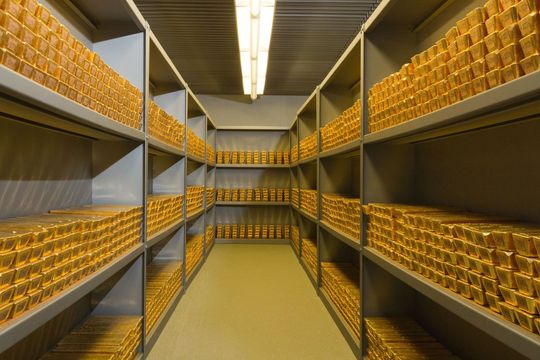Silver futures also mark highest finish since November
Gold futures climbed on Wednesday to settle at their highest in two months, with the precious metal finishing in positive territory for the first time in four sessions.
The modest rise for bullion comes as the U.S. dollar has softened and Treasury yields have slipped, after a sharp rise, helping to raise investment interest in the precious metal.
“We could not be more bullish [on gold] over the next six months or so, as the U.S. economy begins to decelerate,” Michael Armbruster, managing partner at Altavest, told MarketWatch.
“Gold’s price action is especially bullish given that Treasury yields have been on trending higher,” he said. “We think that Treasury yields are likely to peak soon and, if we are correct, that could turbo-charge gold prices to $2,000 or beyond.”
On Wednesday, February gold GCG22, -0.17% GC00, -0.17% added $30.80, or 1.7%, to settle at $1,843.20 an ounce, following declines in each of the past three trading sessions. Prices for the most-active contract ended at their highest since Nov. 19 and marked their strongest daily advance since December, according to FactSet data.
Meanwhile, silver for March delivery SIH22, -0.02% rose 74 cents, or nearly 3.2%, to end at $24.231 an ounce, following a 2.5% gain on Tuesday. Silver’s settlement was the highest since Nov. 22.
Silver, which also draws buyers who look at gold’s sister metal as an industrial asset, is looking at a more than 5% weekly advance. Gold futures are up around 1.4% so far this week.
The recent rise in yields, with the 10-year Treasury note yield TMUBMUSD10Y, 1.857% rising to near 1.90%, had helped to undercut appetite for precious metals, which compete against government debt for haven debt but don’t offer buyers a coupon. On Wednesday, however, yields eased back a bit to 1.829%.
A slump in the equity markets and weakness in the dollar, which gold is usually priced in, has helped to mitigate some of gold’s decline, strategists said. The ICE U.S. Dollar Index DXY, 0.03%, a measure of the dollar against a half-dozen major currencies, was trading 0.2% lower on Wednesday but has been up 0.4% this week.
“Higher volatility and a slump in equity markets has helped the precious metal to cap its losses to some extent,” wrote Naeem Aslam, chief market analyst at AvaTrade, in a daily note. The Dow Jones Industrial Average DJIA, -0.96%, the S&P 500 index SPX, -0.97% and the Nasdaq Composite Index COMP, -1.15% are all down sharply for the week and the month, so far.
The prospects of a series of interest-rate hikes by the U.S. Federal Reserve has had the greatest negative effect on gold because higher rates dull the appeal of nonyielding gold and silver. The rate-setting Federal Open Market Committee next gathers on Jan. 25-26.
“Investors should understand that higher interest rates raise the opportunity cost of holding the non-interest bearing asset, making it less appealing for investors,” Aslam said.
Still, given the calls for even more interest-rate hikes this year than markets are pricing in, not to mention larger individual increases than we’ve seen for many years, “perhaps we are seeing some inflation hedging from traders that don’t think central banks are doing enough to bring price pressures down,” said Craig Erlam, senior market analyst at OANDA, in a market update. Gold has often been used as a hedge against inflation.
Other metals traded on Comex gained, with March copper HGH22, 0.38% up 2% at $4.47 a pound.
April platinum PLJ22, -0.32% tacked on 5% to $1,028.40 an ounce and March palladium PAH22, -0.59% settled at $2,008.40 an ounce, up nearly 5.5%.
In a weekly report Wednesday, Metals Focus said it expects total platinum group metals demand to grow by 11% to top 12.8 million ounces this year — 1.2 million ounces more than 2021. It expects an improvement in automotive manufacturing as well as tighter emissions legislation in major markets, to drive that growth in demand.
Both platinum and palladium “should firm once the auto sector’s chip shortage is mitigated and vehicles start selling again,” said Peter Grant, vice president and the Senior Metals Strategist at Zaner Metals and Tornado Precious Metals Solutions, in his latest newsletter.
While electric vehicles are the future, “major manufacturers are not really going to be phasing out [internal combustion engine] vehicles for 10-years or more,” he said. During that time, platinum group metals loading in catalytic converters will “likely increase amid ever tighter emission standards.”

